-
 bitcoin
bitcoin $109523.663807 USD
-0.13% -
 ethereum
ethereum $4019.526508 USD
2.06% -
 tether
tether $1.000482 USD
0.00% -
 xrp
xrp $2.776815 USD
0.18% -
 bnb
bnb $958.942396 USD
0.12% -
 solana
solana $204.294698 USD
3.84% -
 usd-coin
usd-coin $0.999693 USD
0.00% -
 dogecoin
dogecoin $0.232115 USD
2.09% -
 tron
tron $0.338028 USD
0.84% -
 cardano
cardano $0.790920 USD
1.50% -
 hyperliquid
hyperliquid $44.871443 USD
5.60% -
 ethena-usde
ethena-usde $1.000322 USD
0.04% -
 chainlink
chainlink $21.034165 USD
2.60% -
 avalanche
avalanche $28.794831 USD
-0.54% -
 stellar
stellar $0.360466 USD
1.24%
How do I set up grid trading on Binance?
Binance's grid trading automates buys and sells within a set price range, ideal for volatile or sideways markets using spot or leveraged futures bots.
Sep 24, 2025 at 06:00 pm
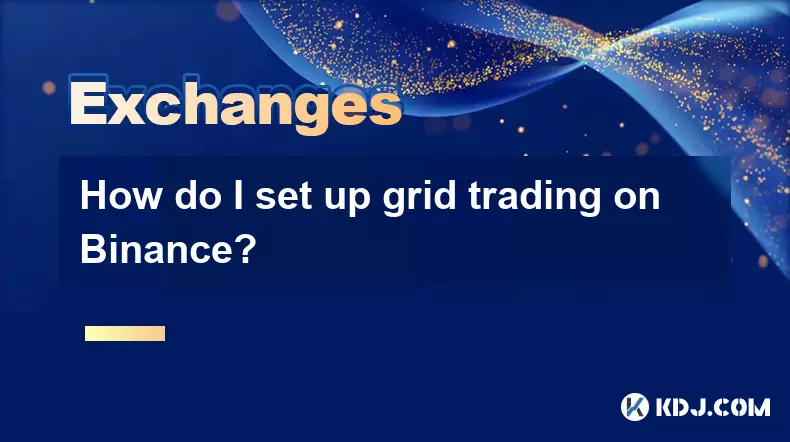
Understanding Grid Trading on Binance
1. Grid trading is a strategy that leverages market volatility by placing buy and sell orders at predetermined price levels within a defined range. On Binance, this method allows traders to automate their buying low and selling high without constant monitoring.
2. The platform offers two types of grid bots: spot grid and futures grid. Spot grid operates with actual assets in your wallet, while futures grid uses leverage and margin, increasing both potential returns and risks.
3. Before setting up a bot, users must select a trading pair such as BTC/USDT or ETH/BUSD. Not all pairs support grid trading, so checking availability in the Binance Futures or Binance Wealth section is essential.
4. The system automatically divides the chosen price range into multiple grids. Each grid level acts as a trigger point for executing trades based on real-time price fluctuations.
5. Profits accumulate from the small spreads between consecutive buy and sell executions across these levels, especially effective in sideways or ranging markets.
Configuring Your Grid Bot Parameters
1. After selecting the trading pair, define the upper and lower price limits. These boundaries should reflect historical support and resistance zones to increase efficiency.
2. Choose the number of grids. More grids mean smaller intervals between orders, allowing finer profit capture but potentially generating more fees if not managed properly.
3. Decide whether to use a fixed investment amount or allocate funds manually. A fixed amount simplifies setup, whereas manual allocation gives control over base and quote currency distribution.
4. For futures grid trading, set the leverage level carefully. Higher leverage amplifies gains but also increases liquidation risk during sharp price movements outside the grid range.
5. Review the estimated return rate and total cost displayed by Binance before activation. This includes transaction fees and funding rates for futures positions.
Monitoring and Adjusting Active Grid Strategies
1. Once launched, the bot runs autonomously according to the preset parameters. Real-time performance data becomes available through the dashboard, showing executed trades and current holdings.
2. Traders should regularly check if the asset price remains within the established range. If it breaks out significantly above or below, parts of the grid may become inactive, reducing profitability.
3. Rebalancing involves stopping the bot, adjusting the price bounds, and restarting. This action ensures alignment with new market conditions without abandoning the entire strategy.
4. Withdraw profits periodically to secure gains. Leaving all earnings inside the bot exposes them to market swings and possible drawdowns.
5. Analyze performance metrics like ROI, number of completed cycles, and average profit per grid. Use this data to refine future setups on similar or different pairs.
Common Risks and Mitigation Techniques
1. In strongly trending markets, grid bots can underperform. When prices move steadily upward or downward beyond the grid zone, opportunities diminish and losses may occur due to imbalanced holdings.
2. High-frequency trading generates numerous transactions, leading to accumulated fees. Using Binance Coin (BNB) to pay fees provides a discount, helping preserve net returns.
3. Leverage in futures grids introduces liquidation threats. Setting conservative leverage and wider grids helps withstand sudden volatility spikes.
4. Over-optimizing parameters based on past data can result in poor live performance. Backtesting tools are useful, but real-market dynamics often differ from historical patterns.
5. Technical failures or exchange downtime are rare but possible. Ensuring stable internet connectivity and keeping backup plans minimizes disruption impact.
Frequently Asked Questions
What happens when the price moves outside the grid range?When the price breaches the upper or lower limit, no further trades execute until it re-enters the range. This pause halts profit generation and may leave an unbalanced asset position, requiring manual intervention or rebalancing.
Can I modify a running grid bot?Direct parameter changes aren't allowed while the bot is active. To adjust settings, stop the bot first. Any open orders will be canceled, and remaining assets returned to your spot or futures account for reassessment.
Is grid trading suitable for beginners?While the interface is user-friendly, understanding market behavior and risk management is crucial. Beginners should start with small capital on spot grids, avoid high leverage, and practice with test strategies before committing significant funds.
How are profits distributed in a spot grid bot?Profits accumulate as additional units of the base or quote currency depending on trade direction. Users can withdraw these earned assets anytime after stopping the bot or choose to reinvest them into a new grid cycle.
Disclaimer:info@kdj.com
The information provided is not trading advice. kdj.com does not assume any responsibility for any investments made based on the information provided in this article. Cryptocurrencies are highly volatile and it is highly recommended that you invest with caution after thorough research!
If you believe that the content used on this website infringes your copyright, please contact us immediately (info@kdj.com) and we will delete it promptly.
- Coin War, Durian Auction, Night Tour: A Wild Ride Through Crypto, Cuisine, and Korean TV
- 2025-09-27 08:45:14
- Cyber Hornet, ETFs, and Crypto: A New York Minute on Hybrid Investments
- 2025-09-27 08:25:12
- Bitcoin's Future Value: Prediction, Trends, and Insights
- 2025-09-27 08:45:14
- MoonBull: The Meme Market's 100x Crypto Contender?
- 2025-09-27 08:25:12
- Eric Trump, Crypto Market, and the Unbelievable Q4: A New York Take
- 2025-09-27 08:30:01
- Linea Crypto & SWIFT: What's the Price Prediction?
- 2025-09-27 08:50:01
Related knowledge
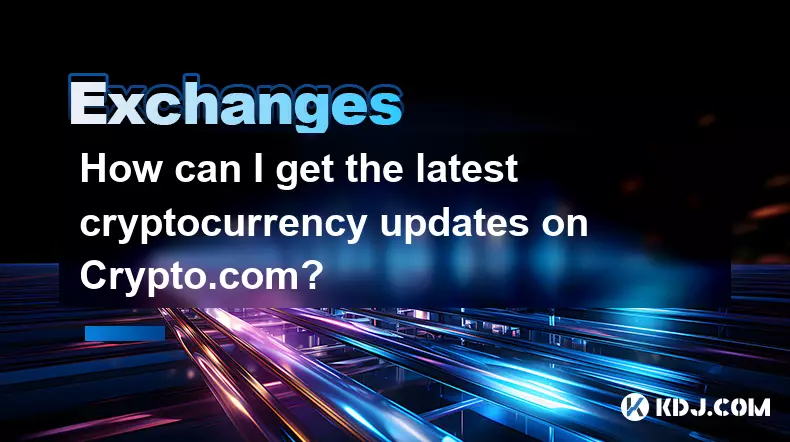
How can I get the latest cryptocurrency updates on Crypto.com?
Sep 26,2025 at 07:54am
Accessing Real-Time Crypto Market Data on Crypto.com1. Navigate to the Crypto.com website or open the mobile application to access live price charts a...
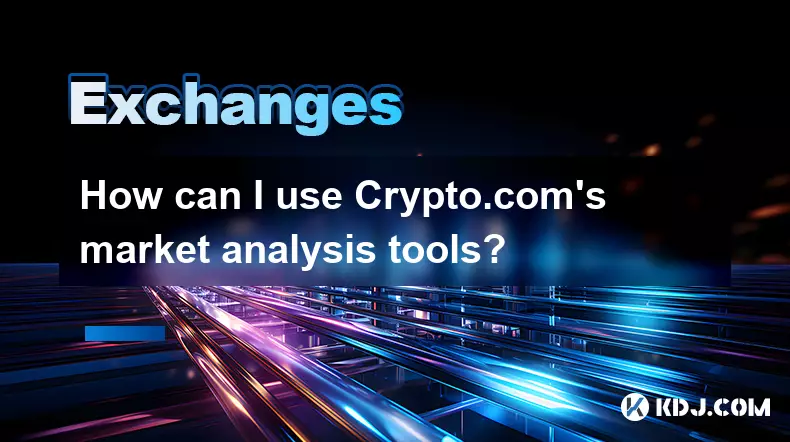
How can I use Crypto.com's market analysis tools?
Sep 23,2025 at 01:54am
Understanding Crypto.com’s Market Analysis Dashboard1. Accessing the market analysis tools begins with logging into your Crypto.com account through th...

How can I unlink my Crypto.com payment method?
Sep 23,2025 at 12:54am
Understanding Payment Methods on Crypto.com1. Crypto.com allows users to link various payment methods including credit cards, debit cards, and bank ac...
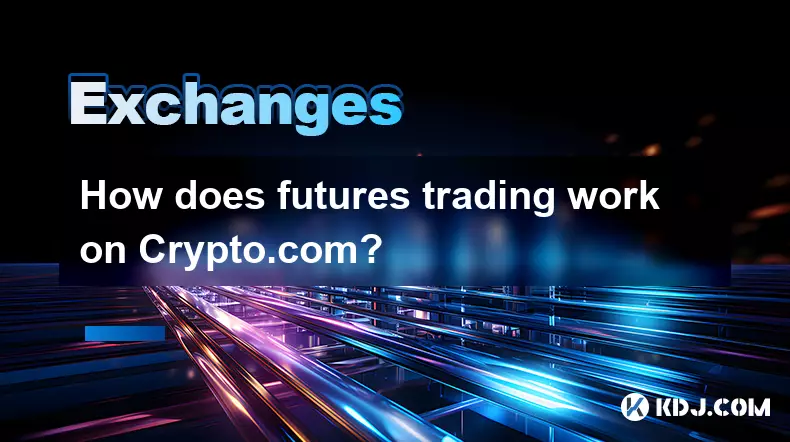
How does futures trading work on Crypto.com?
Sep 27,2025 at 06:37am
Futures Trading Mechanics on Crypto.com1. Futures trading on Crypto.com allows users to speculate on the future price of cryptocurrencies without owni...
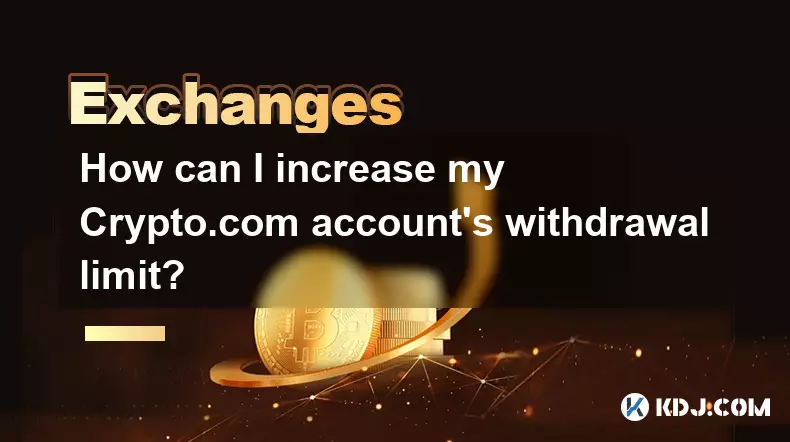
How can I increase my Crypto.com account's withdrawal limit?
Sep 23,2025 at 10:37am
Understanding Withdrawal Limits on Crypto.com1. Crypto.com enforces withdrawal limits to enhance account security and comply with regulatory standards...

How can I check Crypto.com's cryptocurrency exchange rates?
Sep 26,2025 at 01:54am
Accessing Real-Time Crypto.com Exchange Rates1. Navigate to the official Crypto.com website or open the mobile application. Both platforms display liv...

How can I get the latest cryptocurrency updates on Crypto.com?
Sep 26,2025 at 07:54am
Accessing Real-Time Crypto Market Data on Crypto.com1. Navigate to the Crypto.com website or open the mobile application to access live price charts a...

How can I use Crypto.com's market analysis tools?
Sep 23,2025 at 01:54am
Understanding Crypto.com’s Market Analysis Dashboard1. Accessing the market analysis tools begins with logging into your Crypto.com account through th...

How can I unlink my Crypto.com payment method?
Sep 23,2025 at 12:54am
Understanding Payment Methods on Crypto.com1. Crypto.com allows users to link various payment methods including credit cards, debit cards, and bank ac...

How does futures trading work on Crypto.com?
Sep 27,2025 at 06:37am
Futures Trading Mechanics on Crypto.com1. Futures trading on Crypto.com allows users to speculate on the future price of cryptocurrencies without owni...

How can I increase my Crypto.com account's withdrawal limit?
Sep 23,2025 at 10:37am
Understanding Withdrawal Limits on Crypto.com1. Crypto.com enforces withdrawal limits to enhance account security and comply with regulatory standards...

How can I check Crypto.com's cryptocurrency exchange rates?
Sep 26,2025 at 01:54am
Accessing Real-Time Crypto.com Exchange Rates1. Navigate to the official Crypto.com website or open the mobile application. Both platforms display liv...
See all articles










































































